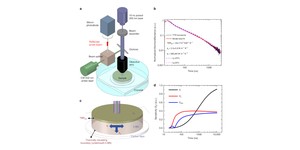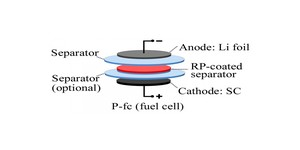Researchers tip reversed LEDs for cooling breakthrough
February 14, 2019 | 11:12
Companies: #university-of-michigan #us-army-research-office #us-department-of-energy

Researchers at the University of Michigan have unveiled a solid-state cooling system for future semiconductors based on a surprisingly simple concept: running a light-emitting diode (LED) in reverse.
A light-emitting diode (LED), as the name suggests, is an electronic component which emits light when electricity is applied in the right direction. Like the non-light-emitting diode, electricity applied in the wrong direction should do nothing - but that's not what researchers at the University of Michigan, supported by the US Department of Energy and Army Research Office, found.
Professors Pramod Reddy and Edgar Meyhofer, who jointly led the work, were building on the work of Nobel Prize for Physics winner Arthur Ashkin when they reversed the electrodes of an infrared light-emitting diode in order to take advantage of a little-known physical phenomenon: 'The LED, with this reverse bias trick, behaves as if it were at a lower temperature,' explains Reddy, not only suppressing its usual emittance of infrared light but also the thermal radiation it should be producing while just sat at room temperature.
The trick is well known, but proving that the LED was now actively absorbing infrared light from nearby objects - and, thus, cooling them - proved difficult, involving getting the two within a distance measured in the tens of nanometres. 'At this close proximity,' the University explains, 'a photon that would not have escaped the object to be cooled can pass into the LED, almost as if the gap between them did not exist.'
The pair, alongside their team, built a tiny calorimeter - a device for measuring changes in energy - and placed it next to an infrared LED the size of a grain of rice. Once the LED was reverse biased the effect was measured: Photons were absorbed from the calorimeter, while the tiny gap between the two objects prevented conduction transferring heat energy back again. The result: A cooling effect measured at 6 watts per metre squared (6W/m²), which the team has proposed could theoretically be boosted up to 1,000W/m².
As with many such breakthroughs in the lab, there's some way to go before the technology is ready for commercialisation - but the team claims it could prove usable for quickly drawing heat away from future processors in small form factor devices including future smartphones.
The team's work has been published as Near-Field Photonic Cooling Through Control of the Chemical Potential of Photons in the journal Nature.

MSI MPG Velox 100R Chassis Review
October 14 2021 | 15:04








Want to comment? Please log in.